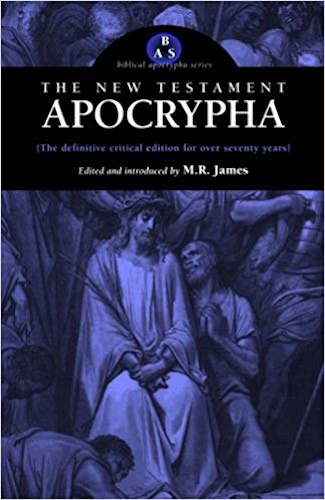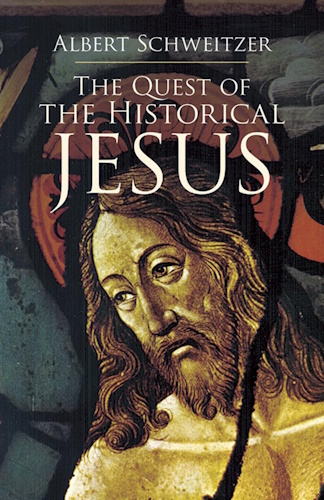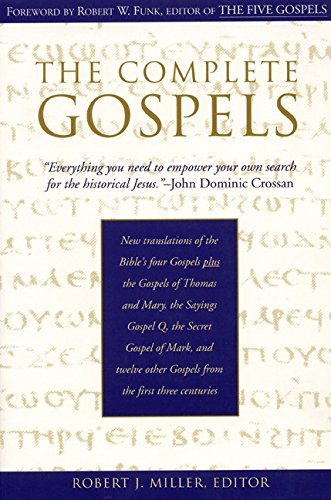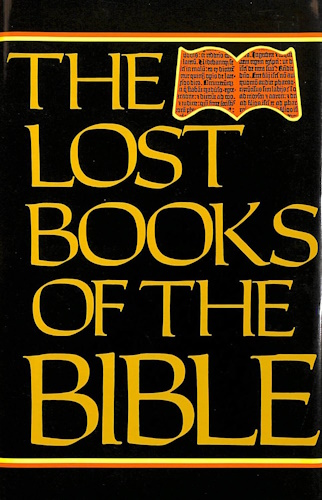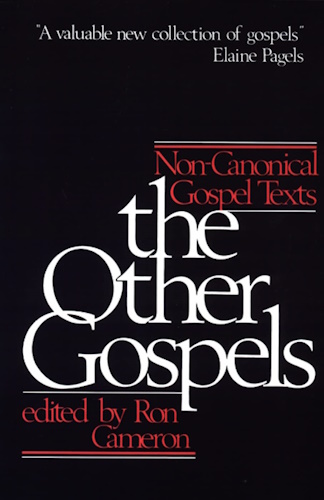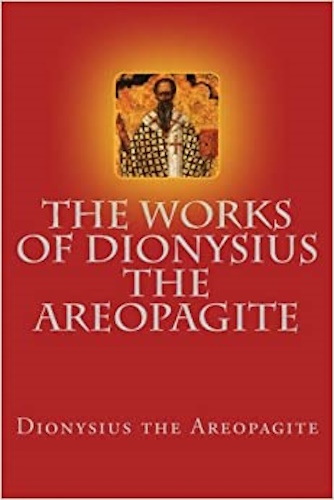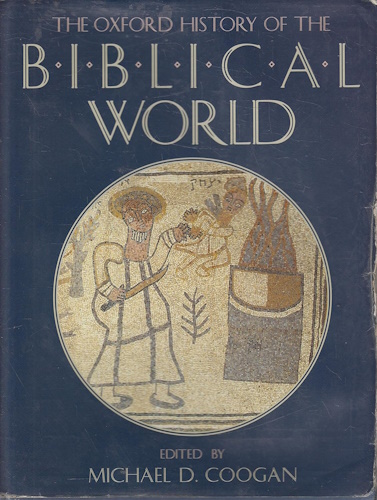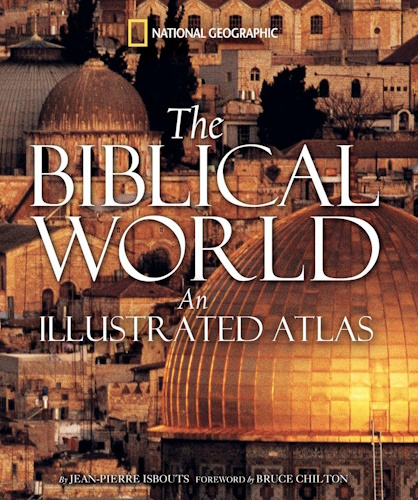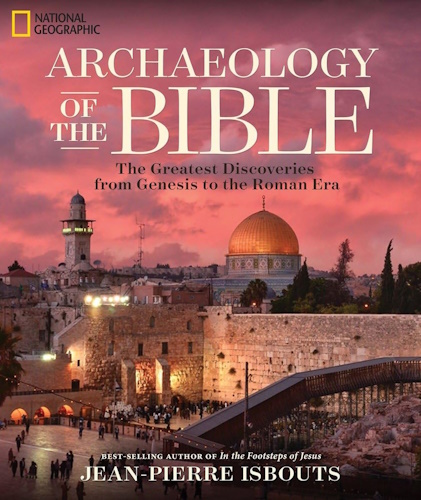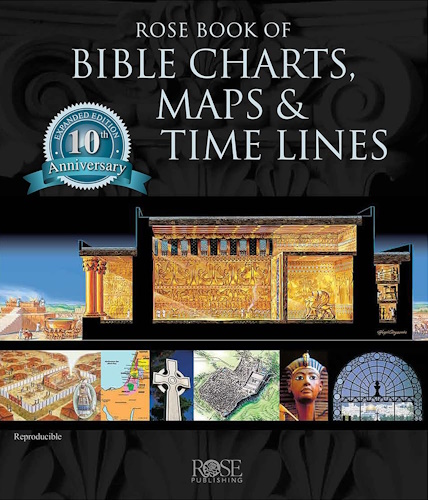
The works of Dionysius the Areopagite
Ecclesiastical Hierarchy
Caput IV
I. Concerning things performed in the Muron, and concerning things perfected in it.
So great and so beautiful are the intelligible visions of the most holy Synaxis, which minister hierarchically, as we have often said, our participation in, and collection towards, the One. But there is another perfecting Service of the same rank, which our Leaders name "Initiation of Muron," by contemplating whose parts in due order, in accordance with the sacred images, we shall thus be borne, by hierarchical contemplations, to its Oneness through its parts.
II. Mysterion of Initiation of Muron259.
In the same way as in the Synaxis, the orders of the imperfect are dismissed, that is, after the hierarchical procession has made the whole circuit of the temple, attended with fragrant incense; and the chanting of the Psalms, and.the reading of the most Divine Oracles. Then the Hierarch takes the Muron and places it, veiled under twelve sacred wings, upon the Divine Altar, whilst all cry aloud, with most devout voice, the sacred melody of the inspiration of the God-rapt Prophets, and when he has finished the prayer offered over it, he uses it,
page 111
in the most holy mystic Rites of things being hallowed, for almost every Hierarchical consecration.
III. Contemplation.
Section I.
The elementary teaching, then, of this the perfecting service, through the things done over the Divine Muron, shews this, in my judgment, that, that which is holy and of sweet savour in the minds of devout men is covered, as with a veil, since it Divinely enjoins upon holy men to have their beautiful and well-savoured assimilations in virtue to the hidden God not seen for vain glory. For the hidden comeliness of God is unsullied, and is sweet beyond conception, and manifested for spiritual contemplation to the intellectual alone, through a desire to have the unsullied images of virtue in souls of the same pattern. For by looking away from the undistorted and well imitated image of the Godlike virtue to that contemplated and fragrant beauty, he thus moulds and fashions it to the most beautiful imitation. And, as in the case of sensible images, if the artist look without distraction upon the archetypal form, not distracted by sight of anything else, or in any way divided in attention, he will duplicate, if I may so speak, the very person that is being sketched, whoever he may be, and will shew the reality in the likeness, and the archetype in the image, and each in each, save the difference of substance; thus, to copyists who love the beautiful
page 112
in mind, the persistent and unflinching contemplation of the sweet-savoured and hidden beauty will confer the unerring and most Godlike appearance260. Naturally, then, the divine copyists, who unflinchingly mould their own intellectual contemplation to the superessentially sweet and contemplated comeliness, do. none of their divinely imitated virtues "to be seen of men261, as the Divine text expresses it; but reverently gaze upon the most holy things of the Church, veiled in the Divine Muron as in a figure. Wherefore, these also, by religiously concealing that which is holy and most Divine in virtue within their Godlike and God-engraved mind, look away to the archetypal conception alone; for not only are they blind to things dissimilar, but neither are they drawn down to gaze upon them. Wherefore, as becomes their character, they do neither love things, merely seeming good and just, but those really being such; nor do they look to opinion, upon which the multitude irrationally congratulate themselves, but, after the Divine example, by distinguishing the good or evil as it is in itself, they are Divine images of the most supremely Divine sweetness, which, having the truly sweet within itself, is not turned to the anomalously seeming of the multitude, moulding Its genuineness to the true images of Itself.
Section II.
Come, then, since we have viewed the exterior comeliness of the entirely beautiful ministration, let
page 113
us now look away to its more godly beauty (whilst itself, by itself, has uncovered the veils), gazing upon its blessed radiance, shedding its bright beams openly around, and filling us with the fragrance unveiled to the contemplators. For the visible consecration of the Muron is neither uncommunicated in, or unseen by those who surround the Hierarch, but, on the contrary, by passing through to them, and fixing the contemplation above the many, is reverently covered by them, and by Hierarchical direction kept from the multitude.
For the splendour of things all holy, by shedding its light clearly and without symbol to men inspired, as being congenial to the thing contemplated, and perfuming their contemplating perceptions without; concealment, advances not yet in the same way to the inferior, but by them as deep contemplators of the thing contemplated is concealed under the enigmas of the wings, without ostentation, so that it may not be defiled by the dissimilar; through which sacred enigmas the well-ordered Ranks of the subordinate are conducted to the degree of holiness compatible with their powers.
Section III.
The holy consecration, then, which we are now extolling, is, as I said, of the perfecting rank and capacity of the Hierarchical functions. Wherefore our Divine Leaders arranged the same, as being of the same rank and effect as the holy perfecting of the Synaxis, with the same figures, for the most
page 114
part, and with mystical regulations and lections. And you may see in like manner the Hierarch bearing forward the sweet perfume from the more holy place into the sacred precincts beyond, and teaching, by the return to the same, that the participation in things Divine comes to all holy persons, according to fitness, and is undiminished and altogether unmoved and stands unchangeably in its identity, as beseems Divine fixity. In the same way the Psalms and readings of the Oracles nurse the imperfect to a life-bringing adoption of sons, and form a religious inclination in those who are possessed with accursed spirits, and dispel the opposing fear and effeminacy from those possessed by a spirit of unmanliness; shewing to them, according to their capacity, the highest pinnacle of the Godlike habit and power, by aid of which they will, the rather, scare away the opposing forces, and will take the lead in healing others; and, following the example of God, they will, whilst unmoved from their own proper gifts, not only be active against those opposing fears, but will themselves give activity to others; and they also impart a religious habit to those who have changed from the worse to a religious mind, so that they should not be again enslaved by evil, and purify completely those who need to become altogether pure; and they lead the holy to the Divine likenesses, and contemplations and communions belonging to themselves, and so establish those who are entirely holy, in blessed and intelligible visions,
page 115
fulfilling their uniform likeness of the One, and making them one.
Section IV.
What, then, shall I say further? Is it not those Ranks already mentioned, which are not entirely pure, that the present consecrating service excludes without distinction, in the same way as the Synaxis, so that it is viewed by the holy alone, in figures, and is contemplated and ministered, by the perfectly holy alone, immediately, through hierarchical directions? Now it is superfluous, as I think, to run over, by the same statements, these things already so often mentioned, and not to pass to the next, viewing the Hierarch, devoutly holding the Divine Muron veiled under twelve wings, and ministering the altogether holy consecration upon it. Let us then affirm that the composition of the Muron is a composition of sweet-smelling materials, which has in itself abundantly fragrant qualities, of which (composition) those who partake become perfumed in proportion to the degree to which they partake of its sweet savour. Now we are persuaded that the most supremely Divine Jesus is superessentially of good savour, filling the contemplative part of ourselves by bequests of Divine sweetness for contemplation. For if the reception of the sensible odours make to feel joyous, and nourishes, with much sweetness, the sensitive organs of our nostrils, —if at least they be sound and well apportioned to the sweet savour—in the same way any one might
page 116
say that our contemplative faculties, being soundly disposed as regards the subjection to the worse, in the strength of the distinguishing faculty implanted in us by nature, receive the supremely Divine fragrance, and are filled with a holy comfort and most Divine nourishment, in accordance with Divinely fixed proportions, and the correlative turning of the mind towards the Divine Being. Wherefore, the symbolical composition of the Muron, as expressing in form things that are formless, depicts to us Jesus Himself, as a well-spring of the wealth of the Divine sweet receptions, distributing, in degrees supremely Divine, for the most Godlike of the contemplators, the most Divine perfumes; upon which the Minds, joyfully refreshed, and filled with the holy receptions, indulge in a feast of spiritual contemplation, by the entrance of the sweet bequests into their contemplative part, as beseems a Divine participation.
Section V.
Now it is evident, as I think, that the distribution of the fontal perfume to the Beings above ourselves, who are more Divine, is, as it were, nearer, and manifests and distributes itself more to the transparent and wholesome mental condition of their receptive faculty, overflowing ungrudgingly and entering in many fashions; but as regards the subordinate contemplators, which are not so receptive, piously concealing the highest vision and
page 117
participation, it is distributed in a supremely Divine proportion, in fragrance corresponding to the recipients. Amongst the holy Beings, then, who are above us, the superior order of the Seraphim is represented under the figure of the twelve wings, established and fixed around Jesus, casting itself upon the most blessed contemplations of Him, as far as permissible, and filled reverently with the contemplated truth distributed in most pure receptions, and, to speak after the manner of men, crying aloud, with never silent lips, the frequent Hymn of Praise; for the sacred knowledge of the supermundane minds is both untiring, and possesses the Divine love without intermission, and is at the same time superior to all baseness and forgetfulness. Hence, as I think, that phrase, "unceasing cry," suggests their perpetual and persistent science and conception of things Divine, with full concord and thanksgiving.
Section VI.
Now we have, as I think, sufficiently contemplated, in the description of the super-heavenly Hierarchy, the incorporeal properties of the Seraphim, Divinely described in the Scriptures under sensible figures explanatory of the contemplated Beings, and we have made them evident to thy contemplating eyes. Nevertheless, since now also they who stand reverently around the Hierarch,
page 118
reflect the highest Order, on a small scale, we will now view with most immaterial visions their most Godlike splendour.
Section VII.
Their numberless faces then, and many feet, manifest, as I think, their property of viewing the most Divine illuminations from many sides, and their conception of the good things of God as ever active and abundantly receptive; and the sixfold arrangement of the wings, of which the Scripture speaks, does not, I think, denote, as seems to some, a sacred number, but that of the highest Essence and Order around God; the first and middle and last of its contemplative and Godlike powers are altogether elevating, free, and supermundane. Hence the most holy wisdom of the Oracles, when reverently describing the formation of the wings, places the wings around their heads262, and middle, and feet; suggesting their complete covering with wings, and their manifold faculty of leading to the Really Being.
Section VIII.
Now if they cover their faces and their feet, and fly by their middle wings only, bear this reverently in mind, that the Order, so far exalted above the highest beings, is circumspect respecting the more lofty and deep of its conceptions, and raises itself,
page 119
in due proportion, by its middle wings, to the vision of God, by placing its own proper life under the Divine yokes, and by these is reverently directed to the judgment of itself.
Section IX.
And, as regards the statement of Holy Scripture, that "one cried out to the other," that shews, I think, that they impart to each other ungrudgingly their own visions of God. And this we should deem worthy of religious recollection, that the Hebrew word in the Holy Scriptures names the most holy Beings of the Seraphim by an explanatory epithet, from their glowing and seething in a Divine and ever-moving life.
Section X.
Since, then, as those who understand Hebrew say, the most Divine Seraphim were named by the Word of God, "Kindling" and "Heating," by a name expressive of their essential condition, they possess, according to the symbolical imagery of the Divine Muron, most elevating powers, which call it to manifestation and distribution of most exhilarating perfumes. For the Being, sweet beyond conception, loves to be moved by the glowing and most pure minds into manifestation, and imparts Its most Divine inspirations, in cheerful distributions, to those who thus supermundanely call It forth. Thus the most Divine Order of supercelestial Beings did
page 120
not fail to recognize the most supremely Divine Jesus, when He descended for the purpose of being sanctified; but recognizes, reverently, Him lowering Himself in our belongings, through Divine and inexpressible goodness; and when viewing Him sanctified, in a manner befitting man, by the Father and Himself and the Holy Spirit, recognized its own supreme Head as being essentially unchanged, in whatever He may do as supreme God. Hence the tradition of the sacred symbols places the Seraphim near the Divine Muron, when it is being consecrated, recognizing and describing the Christ as unchanged, in our complete manhood in very truth. And what is still more divine is, that it uses the Divine Muron for the consecration of every thing sacred, distinctly shewing, according to the Logion, the Sanctified Sanctifying, as always being the same with Himself throughout the whole supremely Divine sanctification. Wherefore also the consecrating gift and grace of the Divine Birth in God is completed in the most Divine perfectings of the Muron. Whence, as I think, the Hierarch pouring the Muron upon the purifying font in cruciform injections, brings to view, for contemplative eyes, the Lord Jesus descending even to death itself through the cross, for our Birth in God, benevolently drawing up, from the old gulping of the destructive death, by the same Divine and resistless descent, those, who, according to the
page 121
mysterious saying, "are baptized into His death," and renewing them to a godly and eternal existence.
Section XI.
But further, the perfecting unction of the Muron gives to him who has been initiated in the most sacred initiation of the Birth in God, the abiding of the supremely Divine Spirit; the sacred imagery of the symbols, portraying, as I think, the most Divine Spirit abundantly supplied by Him, Who, for our sakes, has been sanctified as man by the supremely Divine Spirit, in an unaltered condition of His essential Godhead.
Section XII.
And bear this also hierarchically in mind, that the Law of the most pure initiation completes the sacred consecration of the Divine Altar, by the all pure effusions of the most holy Muron. And the supercelestial and superessential contemplation is source and essence, and perfecting power, of all our deifying holiness. For if our most Divine Altar is Jesus—the supremely Divine sanctifying of the Godly Minds —in Whom, according to the Logion, "being sanctified and mystically offered as a whole burnt-offering, we have the access," let us gaze with supermundane eyes upon the most Divine Altar itself (in which things being perfected, are perfected and sanctified), being perfected from the most Divine Muron itself; for
page 122
the altogether most holy Jesus sanctifies Himself on our behalf, and fills us full of every sanctification, since the things consecrated upon them pass fraternally afterwards in their beneficent effects to us, as children of God. Hence, as I think, the Divine Leaders of our Hierarchy, in conformity with a Hierarchical conception divinely transmitted, name this altogether august ministration "consecration of Muron," from "being consecrated thoroughly," as one might say, "consecration of God," extolling its divine consecrating work in each sense. For both the being sanctified for our sakes, as becomes Man, and the consecrating all things as supreme God, and the sanctifying things being consecrated, is "consecration of Him." As for the sacred song of the inspiration of the God-rapt Prophets, it is called by those who know Hebrew, the "Praise of God," or "Praise ye the Lord," for since every divine manifestation and work of God is reverently portrayed in the varied composition of the Hierarchical symbols, it is not unfitting to mention the Divinely moved song of the Prophets; for it teaches at once, distinctly and reverently, that the beneficent works of the Divine Goodness are worthy of devout praise.
259 Ap. C. iii. s. 17; viii. s. 28. See note, p. 68. The Greeks have two kinds of sacred oil or Unguent, one specially blessed or consecrated by the Bishop, and another not necessarily so.
260 Plato, Rep. i. 6, ii. 116.
![]()
![]()
-
Urantia Book, 44:0.11 - The Celestial Artisans
Never in your long ascendancy will you lose the power to recognize your associates of former existences. Always, as you ascend inward in the scale of life, will you retain the ability to recognize and fraternize with the fellow beings of your previous and lower levels of experience. Each new translation or resurrection will add one more group of spirit beings to your vision range without in the least depriving you of the ability to recognize your friends and fellows of former estates.
-
Princess Bride 1987 Wallace Shawn (Vizzini) and Mandy Patinkin (Inigo Montoya)
Vizzini: HE DIDN'T FALL? INCONCEIVABLE.
Inigo Montoya: You keep using that word. I do not think it means what you think it means. -
Urantia Book, 117:4.14 - The Finite God
And here is mystery: The more closely man approaches God through love, the greater the reality -- actuality -- of that man. The more man withdraws from God, the more nearly he approaches nonreality -- cessation of existence. When man consecrates his will to the doing of the Father's will, when man gives God all that he has, then does God make that man more than he is.
-
Urantia Book, 167:7.4 - The Talk About Angels
"And do you not remember that I said to you once before that, if you had your spiritual eyes anointed, you would then see the heavens opened and behold the angels of God ascending and descending? It is by the ministry of the angels that one world may be kept in touch with other worlds, for have I not repeatedly told you that I have other sheep not of this fold?"
-
Urantia Book, Foreword - 0:12.12 - The Trinities
But we know that there dwells within the human mind a fragment of God, and that there sojourns with the human soul the Spirit of Truth; and we further know that these spirit forces conspire to enable material man to grasp the reality of spiritual values and to comprehend the philosophy of universe meanings. But even more certainly we know that these spirits of the Divine Presence are able to assist man in the spiritual appropriation of all truth contributory to the enhancement of the ever-progressing reality of personal religious experience—God-consciousness.
-
Urantia Book, 1:4.3 - The Mystery Of God
When you are through down here, when your course has been run in temporary form on earth, when your trial trip in the flesh is finished, when the dust that composes the mortal tabernacle "returns to the earth whence it came"; then, it is revealed, the indwelling "Spirit shall return to God who gave it." There sojourns within each moral being of this planet a fragment of God, a part and parcel of divinity. It is not yet yours by right of possession, but it is designedly intended to be one with you if you survive the mortal existence.
-
Urantia Book, 1:4.1 - The Mystery Of God
And the greatest of all the unfathomable mysteries of God is the phenomenon of the divine indwelling of mortal minds. The manner in which the Universal Father sojourns with the creatures of time is the most profound of all universe mysteries; the divine presence in the mind of man is the mystery of mysteries.
-
Urantia Book, 1:4.6 - The Mystery Of God
To every spirit being and to every mortal creature in every sphere and on every world of the universe of universes, the Universal Father reveals all of his gracious and divine self that can be discerned or comprehended by such spirit beings and by such mortal creatures. God is no respecter of persons, either spiritual or material. The divine presence which any child of the universe enjoys at any given moment is limited only by the capacity of such a creature to receive and to discern the spirit actualities of the supermaterial world.
-
Urantia Book, 11:0.1 - The Eternal Isle Of Paradise
Paradise is the eternal center of the universe of universes and the abiding place of the Universal Father, the Eternal Son, the Infinite Spirit, and their divine co-ordinates and associates. This central Isle is the most gigantic organized body of cosmic reality in all the master universe. Paradise is a material sphere as well as a spiritual abode. All of the intelligent creation of the Universal Father is domiciled on material abodes; hence must the absolute controlling center also be material, literal. And again it should be reiterated that spirit things and spiritual beings are real.
-
Urantia Book, 50:6.4 - Planetary Culture
Culture presupposes quality of mind; culture cannot be enhanced unless mind is elevated. Superior intellect will seek a noble culture and find some way to attain such a goal. Inferior minds will spurn the highest culture even when presented to them ready-made.
-
Urantia Book, 54:1.6 - True And False Liberty
True liberty is the associate of genuine self-respect; false liberty is the consort of self-admiration. True liberty is the fruit of self-control; false liberty, the assumption of self-assertion. Self-control leads to altruistic service; self-admiration tends towards the exploitation of others for the selfish aggrandizement of such a mistaken individual as is willing to sacrifice righteous attainment for the sake of possessing unjust power over his fellow beings.
-
Urantia Book, 54:1.9 - True And False Liberty
How dare the self-willed creature encroach upon the rights of his fellows in the name of personal liberty when the Supreme Rulers of the universe stand back in merciful respect for these prerogatives of will and potentials of personality! No being, in the exercise of his supposed personal liberty, has a right to deprive any other being of those privileges of existence conferred by the Creators and duly respected by all their loyal associates, subordinates, and subjects.
-
Urantia Book, 54:1.8 - True And False Liberty
There is no error greater than that species of self-deception which leads intelligent beings to crave the exercise of power over other beings for the purpose of depriving these persons of their natural liberties. The golden rule of human fairness cries out against all such fraud, unfairness, selfishness, and unrighteousness.
